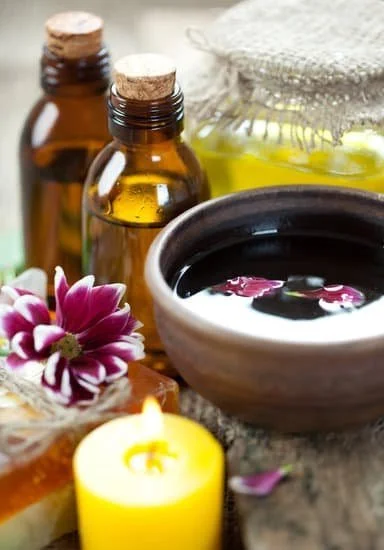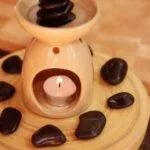Aromatherapy has long been appreciated for its multitude of benefits in promoting relaxation, stress relief, and overall well-being. One of the best ways to utilize essential oils for aromatherapy without a diffuser is through various alternative methods. From topical application to inhalation techniques, there are numerous ways to harness the therapeutic properties of essential oils without the need for a traditional diffuser.
Essential oils are highly concentrated plant extracts that have been used for centuries for their healing and aromatic properties. Each type of essential oil possesses its own unique therapeutic benefits, making them versatile tools in promoting health and wellness. Whether it’s eucalyptus for congestion relief or lavender for relaxation, choosing the right essential oil is crucial in reaping the full benefits of aromatherapy.
In this article, we will delve into the world of essential oils and explore the different methods of using them for aromatherapy without a diffuser. From topical application to creating DIY room sprays, we will guide you on how to incorporate essential oils into your daily routine to enhance your physical and emotional well-being.
Whether you’re new to aromatherapy or a seasoned enthusiast, this comprehensive guide will provide valuable insights into maximizing the therapeutic effects of essential oils without the use of a diffuser.
Understanding Essential Oils
When it comes to aromatherapy, essential oils play a crucial role in providing therapeutic benefits for relaxation, stress relief, and overall health and well-being. Understanding the different types of essential oils and their specific therapeutic properties is essential when choosing the right oil for your needs. With a wide variety of options available, it’s important to explore the various types of essential oils and how they can be used effectively for aromatherapy without a diffuser.
One of the best ways to use essential oils for aromatherapy without a diffuser is through topical application. This method involves diluting the essential oil with a carrier oil, such as coconut or jojoba oil, and applying it directly to the skin. The most common areas for application include the wrists, temples, neck, and soles of the feet.
The proper dilution ratio is typically 3-5 drops of essential oil per teaspoon of carrier oil. It’s important to perform a skin patch test before applying any essential oil topically to ensure there are no adverse reactions.
Another effective method for using essential oils without a diffuser is by incorporating them into baths. Adding a few drops of an essential oil, such as lavender or eucalyptus, to bathwater can create a luxurious and therapeutic experience. The steam from the bath helps release the aroma of the oils while allowing them to be absorbed through both inhalation and skin contact. This method is especially beneficial for relaxation and stress relief after a long day.
Inhalation methods also provide an excellent way to enjoy the benefits of essential oils without a diffuser. Simple techniques such as adding a few drops of oil to a cotton ball or handkerchief allow you to inhale the aroma directly. Another option is steam inhalation, where you can add a few drops of essential oil to hot water and then lean over it with your head covered by a towel to capture the steam.
| Method | Description |
|---|---|
| Topical Application | Diluting essential oils with carrier oils and applying them directly to the skin. |
| Aromatherapy Bath | Adding a few drops of essential oil into bathwater for a therapeutic experience. |
| Inhalation Methods | Using techniques like inhaling from cotton balls or steam inhalation. |
Topical Application
When using essential oils for aromatherapy through topical application, it is important to understand the proper dilution ratios and best carrier oils to use. Topical application of essential oils can be an effective way to experience their therapeutic benefits, as they can be absorbed through the skin and enter the bloodstream. Here are some tips on how to use essential oils topically:
- Choose the right carrier oil: Carrier oils help dilute essential oils to reduce the risk of skin irritation and also help spread the essential oil across a larger surface area. Some commonly used carrier oils include coconut oil, almond oil, jojoba oil, and olive oil.
- Dilution ratios: It is important to dilute essential oils before applying them to the skin. A general rule of thumb is to use a 2% dilution, which means adding around 12 drops of essential oil per ounce (30ml) of carrier oil for adults. For children and those with sensitive skin, a lower dilution ratio should be used.
- Proper application: Essential oils can be applied directly to the skin or mixed with a carrier oil in a roller bottle for easy application. When applying diluted essential oils, it is best to massage them into pulse points (such as wrists and temples), the bottoms of feet, or affected areas for targeted relief.
Using essential oils topically can be a convenient and efficient way to experience their benefits for relaxation, stress relief, and overall wellbeing. When used correctly and safely, topical application allows individuals to personalize their aromatherapy experience based on their specific needs and preferences without the need for a diffuser.
Aromatherapy Bath
When incorporating essential oils into your bath, it is important to remember that oil and water do not mix. For this reason, it is recommended to mix the essential oil with a carrier oil or an unscented bath gel before adding it to your bathwater.
The general rule of thumb is to add about 5-10 drops of essential oil per tablespoon of carrier oil or bath gel. Common carrier oils for this purpose include coconut oil, jojoba oil, and sweet almond oil.
Some popular essential oils for aromatherapy baths include lavender for relaxation and stress relief, eucalyptus for respiratory support and muscle tension relief, and citrus oils like lemon or orange for an energizing and uplifting effect. It’s important to research each essential oil before using it in a bath due to potential skin sensitivities.
Incorporating essential oils into your bath routine provides a luxurious opportunity for self-care while promoting overall well-being through aromatherapy. By following proper guidelines on dilution and choosing the right essential oils, you can create a spa-like experience right in the comfort of your own home without the need for a diffuser.
| Benefit | Example Essential Oils |
|---|---|
| Relaxation & Stress Relief | Lavender, Chamomile |
| Muscle Tension Relief | Eucalyptus, Peppermint |
| Energizing & Uplifting | Lemon, Orange |
Inhalation Methods
When it comes to using essential oils for aromatherapy without a diffuser, inhalation methods are a popular and effective way to enjoy the therapeutic benefits of these natural oils. One of the simplest ways to inhale essential oils is by adding a few drops to a cotton ball or handkerchief. This allows you to easily carry the scent with you throughout the day, providing an ongoing source of relaxation or energy, depending on the essential oil used.
Another popular method of inhalation is through steam inhalation. This involves adding a few drops of essential oil to a bowl of hot water and carefully inhaling the aromatic steam. This method is particularly useful for respiratory conditions or for clearing congestion. It’s important to remember not to add too many drops of essential oil as it could be overwhelming, and caution should be taken with hot water to avoid burns.
Using Essential Oils on Fabric
In addition to using cotton balls or handkerchiefs, essential oils can also be used directly on fabric such as bed linens or pillowcases. Simply add a few drops of essential oil onto a cloth and then tuck it under your pillow or near your sleeping space. The scent will provide a soothing ambiance for relaxation or restful sleep, making this an excellent option for those looking for non-invasive ways to use aromatherapy in their daily routine.
Personal Inhalers
Personal inhalers are another great option for enjoying the benefits of aromatherapy without a diffuser. These small tubes allow you to soak the inner wick with your chosen essential oil blend and seal them back up, creating an easily transportable method for keeping your favorite scents close at hand throughout your day.
Essential Oil Diffuser Alternatives
Reed Diffusers
Reed diffusers are a popular alternative to traditional essential oil diffusers. These simple and decorative items consist of reeds inserted into a bottle of essential oil and a carrier oil blend. The reeds absorb the oil and disperse the scent into the air. To use a reed diffuser, simply insert the reeds into the bottle and allow them to soak up the oil. Then, flip the reeds occasionally to refresh the scent in the room.
Clay Pendants
Clay pendants are another creative way to enjoy the benefits of aromatherapy without a diffuser. These small, porous pendants can be infused with essential oils and worn as jewelry or hung in various areas around your home. When wearing a clay pendant, your body heat helps to release the aroma of the essential oil, providing you with personal aromatherapy benefits throughout the day.
DIY Room Sprays
Creating your own room spray is an easy and cost-effective way to diffuse essential oils without a traditional diffuser. Simply mix pure essential oils with water or witch hazel in a spray bottle, and then spritz the mixture in any room as needed. You can customize your DIY room spray with different essential oil blends to create unique scents that suit your preferences and desired effects.
When using these alternative methods for diffusing essential oils, it’s important to remember that not all essential oils are safe for direct skin contact or ingestion. Always ensure that you’re using high-quality, pure essential oils, and follow proper dilution guidelines when utilizing these alternatives for aromatherapy without a diffuser. By exploring these inventive alternatives, you can still enjoy all of the therapeutic benefits of essential oils even without a traditional diffuser on hand.
Room Freshening
There are many benefits to using essential oils for aromatherapy, including relaxation, stress relief, and other health benefits. However, not everyone has a diffuser or wants to use one. Fortunately, there are alternative methods for enjoying the therapeutic effects of essential oils without a traditional diffuser.
Here are some ideas on how to use essential oils to naturally freshen and deodorize your home without a diffuser:
- Make your own room spray by mixing a few drops of your favorite essential oil with water in a spray bottle.
- Place a few drops of essential oil on cotton balls and tuck them into drawers, closets, or shoes to keep them smelling fresh.
- Create natural air fresheners by adding a few drops of essential oil to small containers of baking soda or dried flowers.
Using these methods allows you to enjoy the benefits of aromatherapy without the need for a diffuser. Whether you want to create a calming atmosphere in your home or simply freshen up the space, these alternatives can provide the same therapeutic effects as using a diffuser.
Incorporating essential oils into your home can also help improve mood and promote overall well-being. By using natural methods for room freshening, you can avoid harsh chemicals often found in commercial air fresheners while enjoying the pleasant fragrance and therapeutic benefits of essential oils.
Safety Tips
In conclusion, aromatherapy is a versatile and effective way to promote relaxation, stress relief, and overall well-being. Essential oils are a key component of aromatherapy, offering a wide range of therapeutic properties that can be harnessed in various ways. While diffusers are commonly used for aromatherapy, there are many alternative methods for using essential oils without a traditional diffuser.
Topical application is one of the best ways to use essential oils for aromatherapy without a diffuser. By diluting essential oils with carrier oils and applying them to the skin, you can experience their benefits through absorption. Another effective method is through inhalation, whether by adding essential oils to hot water for steam inhalation or using them on a cotton ball or handkerchief. Additionally, incorporating essential oils into baths can provide a luxurious and therapeutic experience.
When using essential oils for aromatherapy, it’s important to follow safety precautions to avoid any adverse effects. Proper storage of essential oils is crucial to maintain their quality and potency, while care should be taken to avoid contact with the eyes.
It’s also important to be aware of potential contraindications when using essential oils, especially for individuals with certain health conditions or sensitivities. With these considerations in mind, you can enjoy the benefits of aromatherapy and essential oils safely and effectively without the need for a diffuser.
Frequently Asked Questions
How Do I Use Essential Oils Without a Diffuser?
Essential oils can be used without a diffuser by simply inhaling the scent directly from the bottle or applying a few drops onto a cotton ball or tissue. You can also dilute the essential oil in a carrier oil and apply it to your skin, or add a few drops to a warm bath.
What Can I Use Instead of Diffuser Oil?
If you don’t have diffuser oil, you can use alternative methods to enjoy the benefits of aromatherapy. One option is to create your own room spray by mixing water with a few drops of essential oil in a spray bottle.
You can also make your own reed diffuser using essential oils and a carrier oil like sweet almond or fractionated coconut oil.
Do I Need a Diffuser for Aromatherapy?
While diffusers are commonly used for aromatherapy, they are not necessary for enjoying the therapeutic benefits of essential oils. There are various other ways to use essential oils for aromatherapy, such as inhalation, topical application, and adding them to bathwater. The key is finding a method that works best for you and your needs.

Are you looking for a natural way to improve your health and wellbeing?
If so, aromatherapy may be the answer for you.





